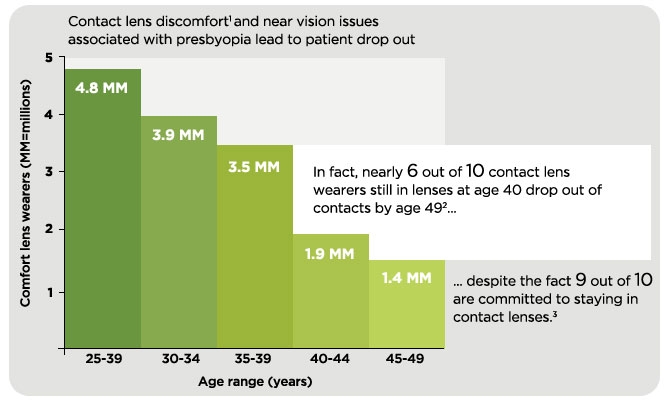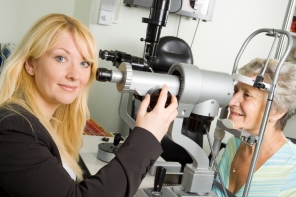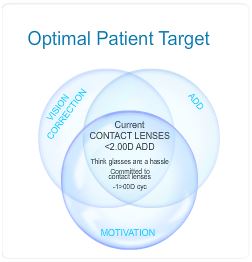A missed opportunity
The risk of your patient dropping out increases over the age of 40

Myopes make up 85% and hyperopes make up the other 15% of the spherical soft contact lens population. However, the trend for presbyopic multifocal contact lens fittings is to fit mostly high ADD myopes and hyperopes. A smaller proportion of the presbyopic contact lens-wearing population – a huge part of presbyopic vision – is not proactively being prescribed multifocal contact lenses!
What happens to these myopes as they become presbyopic?
Unfortunately, many myopes discontinue contact lens wear – often before they're ready. Eye Care Professionals are the key to identifying these patients, providing a contact lens option and setting them up for early success.
1. Data on file. Johnson & Johnson Vision Care, 2009
2. 2008 Gallup study of the consumer contact lens market.
3. Data on file. Johnson & Johnson Vision Care, 2008.
Committed to contacts
 |
For some patients, contact lenses are about more than vision correction. As patients age, they may become even more committed to staying in contact lenses.4 Help these patients stay satisfied and in their contact lenses longer by starting an early conversation about their contact lens options. |
42005 Gallup study of older contact lens wearers.
Setting your patients for success
You can help more patients stay in their contact lenses longer by rethinking your approach to multifocal contact lens fitting:

1. Identify the right patient for multifocal contact lenses
2. Set expectations
3. Start early!


